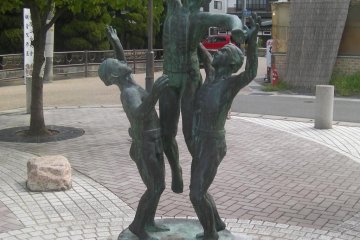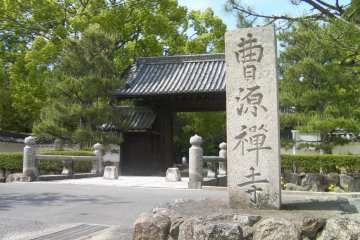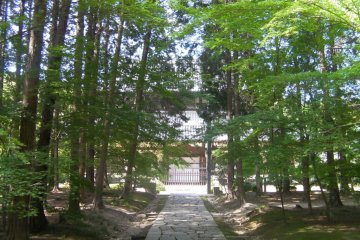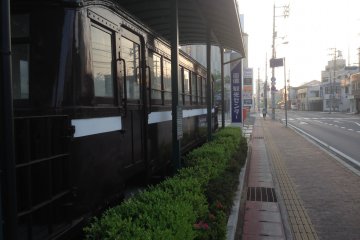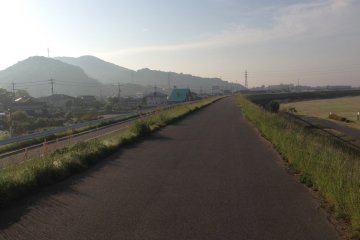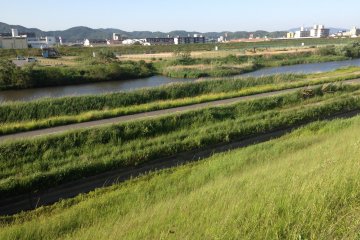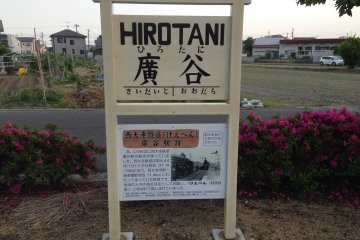Saidaiji is well-known for its Hadaka Matsuri or Naked Festival but few people, even locals, are aware that there was once a light rail line that ran to central Okayama City. Saidaiji Railway was in operation from 1911 to 1962 and provided transport along the 11.4 kilometers between what was then Saidaiji Station (currently Ryobi Bus Terminal) and the terminus at Kourakuen Garden.
The typical car held a maximum of sixty passengers including a space at the outside front and rear for those with bicycles. The course of the train line followed that of the Hyakken River which curves around several low mountains before reaching the city.
While the actual working train line has moved into history, there are remnants worth seeing. One of the old cars from the line has been restored and put on display outside of Ryobi Bus Terminal. Nearby is an authentic rail switching mechanism, with an explanation of how it was used. If you walk the course of the old line you will find a few markers indicating former station stops. Navigating is breeze even if it is your first time in Saidaiji.
The path of the railway was converted to walking and bicycle paths which are divided into three sections. The first runs from Ryobi Bus Terminal to the pedestrian bridge that passes under Route 2. The second section starts at the end of the bridge and continues until it intersects with the Hyakken River. The final section of the course is the path along the river itself which has riverside and elevated paths.
The Hyakken River is an artificial waterway initially developed during the Edo era as a way to decrease flooding on the Asahi River. After roughly fifty years as a train line it has blossomed into to a popular parkway complete with athletic fields, exercise courses, remote controlled car circuits, playgrounds, tennis courts and basketball courts.
It takes about two hours to walk the old Saidaiji Railway from beginning to end and you could probably do the trip in forty minutes by bicycle. The most interesting thing about the path that remains is that it still allows you to make contact with nature and friendly people along the way.



